Preparing trees for winter is essential not only in risky farming regions, but also in central Russia, even in a southerly direction. Small frosts, especially before the first snow falls, can damage the root system of even an adult plant, seedlings and young plantings are also at risk.
Warming of cultivated trees for the winter is an important measure to protect garden crops. It will allow you to get a rich harvest even after severe frosts.
Content
Which materials are better
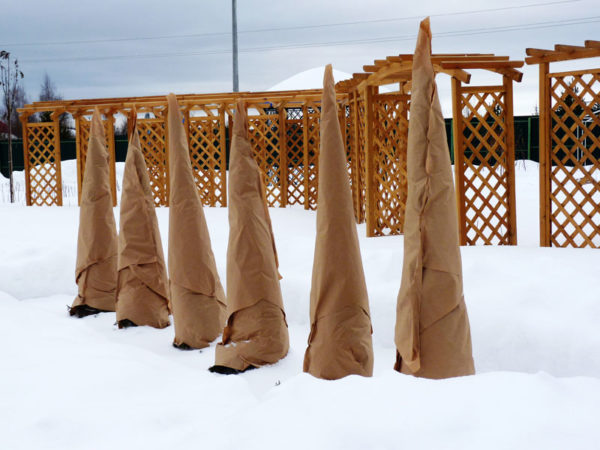 For shelter from the cold, you can use natural materials that can be assembled independently, as well as special synthetic fabrics and canvases. The former are distinguished by their affordable price, the latter by their durability and effectiveness. In the middle lane, shelter of soil and roots is widespread with sawdust, spruce spruce branches and deciduous foliage. In order to achieve good thermal insulation, it is necessary to lay them in several layers, but in the spring these materials will begin to give the soil useful elements, they will not interfere with active air exchange. Under such shelter the soil will not ripen, the risk of developing fungus and mold is minimal. However, these materials will not save from severe cold weather, without additional strengthening they will quickly be inflated by the wind, especially in the open.
For shelter from the cold, you can use natural materials that can be assembled independently, as well as special synthetic fabrics and canvases. The former are distinguished by their affordable price, the latter by their durability and effectiveness. In the middle lane, shelter of soil and roots is widespread with sawdust, spruce spruce branches and deciduous foliage. In order to achieve good thermal insulation, it is necessary to lay them in several layers, but in the spring these materials will begin to give the soil useful elements, they will not interfere with active air exchange. Under such shelter the soil will not ripen, the risk of developing fungus and mold is minimal. However, these materials will not save from severe cold weather, without additional strengthening they will quickly be inflated by the wind, especially in the open.
Warming of young trees with agrofibre is a more common and reliable measure for their protection. Non-woven fabrics pass moisture well, so the greenhouse effect does not occur. At the same time, numerous small pores do not allow air to quickly leak through the layers, even a strong wind is not terrible for such a shelter. Agrofibre can be used for several seasons. Inexpensive options can be spoiled by rodents and pests, they will also become thinner over time. Dense products with rubber impregnation should be avoided, under such moisture will surely accumulate.
Among heaters, materials such as matting, felt are distinguished. They have the best thermal insulation characteristics, however, the least durable. Just one layer will be enough to protect the roots and even the trunk from severe frosts. Proper use of such shelters is not difficult, their price is not too high. But after only one season you will have to buy a heater again.
Features of the regions
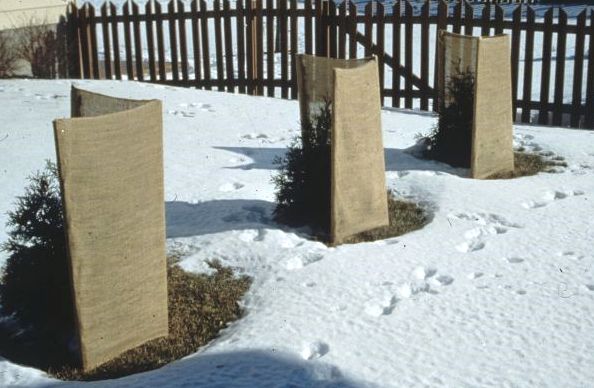 No matter how reliable the insulation is, if the roots or trunk are already damaged by cold, and the soil has managed to freeze, the tree may die. Therefore, it is very important to choose the right time for processing plantings. It depends on the climatic conditions in the region.
No matter how reliable the insulation is, if the roots or trunk are already damaged by cold, and the soil has managed to freeze, the tree may die. Therefore, it is very important to choose the right time for processing plantings. It depends on the climatic conditions in the region.
In the southern lane it is enough to mulch the soil in time and cover the trunk from pests. You can do this before the end of November. Additional protection will be required only to those seedlings that were planted late. Be sure to cover capricious varieties, tropical plants, which should be acclimatized for several years.
In the Moscow region, the middle zone, the Volga region, it is necessary to carry out all measures to prepare plantings before the beginning of November. In the middle of the month at night, the temperature already drops below zero, but snow rarely falls during this period.You can use only improvised simple means if the forecast for the winter is not too scary. Processing is carried out in several stages:
- pruning
- mulching;
- barrel insulation;
- sheltering the roots with sawdust or spruce branches;
- pouring snow.
Due to strong winds and high humidity, it is recommended to use agrofiber, matting or felt for additional protection in the Volga region, but this is not necessary if there is enough snow for reliable shelter.
In the northern regions, it is necessary to insulate the whole tree, including large branches before the end of October. The first layer of shelter of the roots must be strengthened with heavy spruce branches or not too thick boards. Additionally, snow is buried in the root circle. The trunk is insulated significantly, in several layers.
Gardeners need to consider that earlier shelter can harm the plant, especially in warm regions. Therefore, it is important to adhere to standard deadlines. For example, you need to determine the time of shelter of the apple tree according to the average daily temperature. They begin preparations when the daily and night totals approach a stable 10 degrees. Up to the zero mark, the plants will be able to survive the cooling, but by this time they need to be fully insulated. For example, in the Moscow Region this is the period from late October to mid November, in the Urals from early October to early November, in Krasnodar - the second half of November and early December, and in the Far East from the first days of October until the middle of the month.
Warming of adult plantings
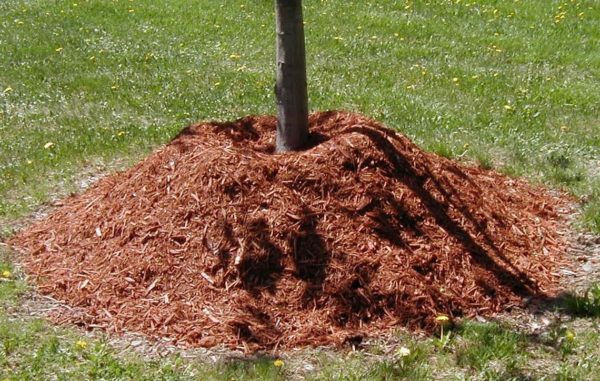 Adults, large trees need protection, if the prognosis is unfavorable, they suffered diseases in the current year. A small shelter is always desirable, as this will allow you not to lose the achieved crop volume even under the most adverse conditions in the next period. And if it is difficult to damage adult plants in winter frosts, then the first cold weather without snow, the late spring freezing temperatures are even more dangerous.
Adults, large trees need protection, if the prognosis is unfavorable, they suffered diseases in the current year. A small shelter is always desirable, as this will allow you not to lose the achieved crop volume even under the most adverse conditions in the next period. And if it is difficult to damage adult plants in winter frosts, then the first cold weather without snow, the late spring freezing temperatures are even more dangerous.
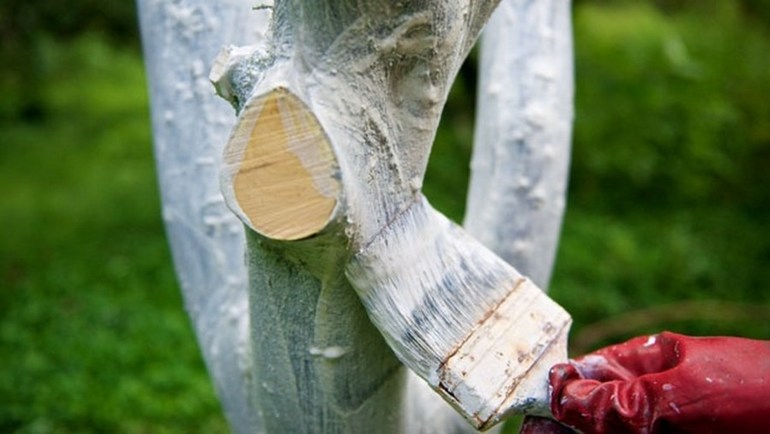 You may be interested in:
You may be interested in:Training
Preparation of adult fruit trees for the winter should begin with pre-treatment. First of all, you need to remove the entire crop, be sure to dispose of all rotted, spoiled fruits. Fallen leaves need to be raked. They can become a source of contamination of the soil and new shoots in the spring. You need to take care of pests. An effective measure of infection prevention will be the treatment of:
- solution of copper sulfate;
- lime concentrate;
- weak solution of potassium permanganate.
If the warming material is used not the first time, after storage it must be dried and treated with the same composition in order to exclude infection. So that rodents do not penetrate into the shelter and to the roots, you can use such a simple remedy as coffee grounds. The pungent odor repels even harmful slugs and snails, large animals. In winter, they all come to the gardens in search of food. Whitewashing with a special compound or lime will also make it difficult for rodents to access the bark that is delicious for them. The enemies of wood are small insects, ants will not be able to penetrate the cracks and harm the plant. In addition, this measure will prevent cracking of the rough bark of the adult trunk due to temperature changes.
Trunk circle insulation
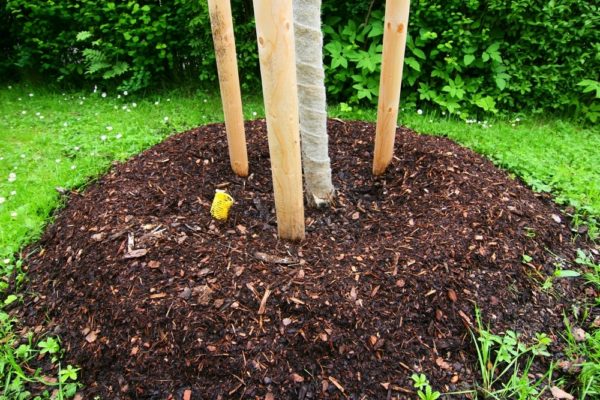 Adult garden trees need shelter near the trunk circle. Developed roots can be damaged by frost, so be sure to mulch the earth. Pre-treat the soil with a weak solution of fungicide. Distinguish between constant and dynamic mulch. The constant also performs a decorative function, but in cold regions it is recommended to perform dynamic processing first, for which they are suitable:
Adult garden trees need shelter near the trunk circle. Developed roots can be damaged by frost, so be sure to mulch the earth. Pre-treat the soil with a weak solution of fungicide. Distinguish between constant and dynamic mulch. The constant also performs a decorative function, but in cold regions it is recommended to perform dynamic processing first, for which they are suitable:
- peat;
- sawdust;
- compost;
- manure;
- humus;
- hay.
I lay the manure and ready compost in a layer no thicker than 6 centimeters. Otherwise, decay may begin. All other materials can be stacked up to 10 centimeters. Similarly produce seedlings.
Permanent mulch is a coating of the soil with durable materials with good thermal insulation performance. For example, gravel with various sizes of fractions, coarse sand, natural stone chips. If it is desirable to cover the dynamic mulch with spruce branches or agrofibre, then the constant does not need further strengthening. An exception is only the northern regions, where layering is needed to protect against severe frosts.
Warming trunk and branches
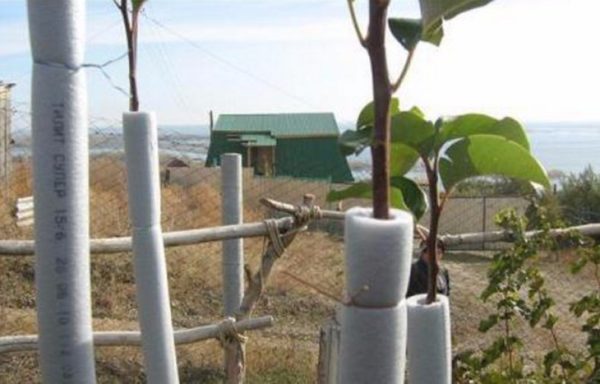 Adult plants need to be fully insulated only in the northern regions. If temperatures do not fall below minus 30 degrees Celsius, a stronger trunk with thick and rough bark will cope with the load. Such wooden insulation is already enough. However, if the plant was infected, weakened, recently transplanted, it makes sense to still cover the trunk additionally, but then a little earlier remove all materials to ensure timely awakening in the spring.
Adult plants need to be fully insulated only in the northern regions. If temperatures do not fall below minus 30 degrees Celsius, a stronger trunk with thick and rough bark will cope with the load. Such wooden insulation is already enough. However, if the plant was infected, weakened, recently transplanted, it makes sense to still cover the trunk additionally, but then a little earlier remove all materials to ensure timely awakening in the spring.
Since it is no longer possible to build a protective frame around the trunk due to the size of the plant, it is necessary to use plastic materials and canvas. For example, synthetic or natural pipe insulation is a good choice. She will protect from the cold, and from rodents, even from wild hares. Such materials are used in the installation of the pipeline, since they are durable, they can be used in the garden for up to ten years. If the material is sold in the form of large rolls, you can not cut it into strips, but wrap it around the entire barrel. On the outside, secure with twine or ordinary tape. In the same way, process large branches.
Shelter of young trees
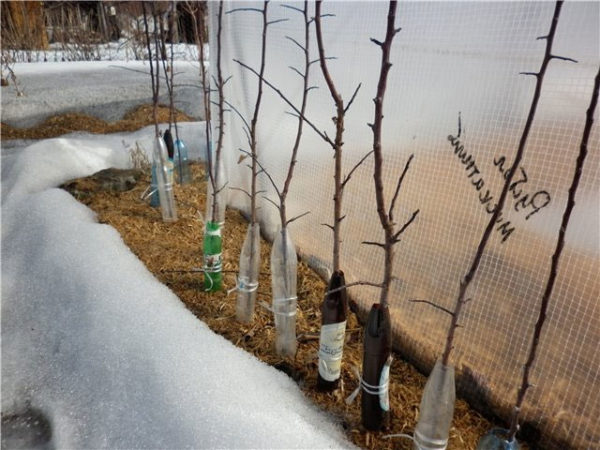 Young plants must be protected from frost, because their roots are not too strong yet, and the trunk has not yet been covered with a thick layer of perennial bark. Such annual processing will allow you to get the first crop several years earlier. This is especially necessary when planting trees non-specific for such a region, heat-loving. Often, gardeners are faced with the fact that young plantations "rest" and do not bloom. Often this is due precisely to hypothermia. Reliable shelter will allow you to quickly form a crown and a lot of fruitful branches.
Young plants must be protected from frost, because their roots are not too strong yet, and the trunk has not yet been covered with a thick layer of perennial bark. Such annual processing will allow you to get the first crop several years earlier. This is especially necessary when planting trees non-specific for such a region, heat-loving. Often, gardeners are faced with the fact that young plantations "rest" and do not bloom. Often this is due precisely to hypothermia. Reliable shelter will allow you to quickly form a crown and a lot of fruitful branches.
A good option is warming with thick tights. It is desirable that these were products with natural fibers. Such protection can, in general, not be removed from the trunk and branches during the first few years. Synthetics do not allow air and moisture to pass through well, so it is better not to use it. Insulated models are best suited. The technology of winding and fastening is simple, you can master it using one of the many videos.
The first stage of processing is the warming of the periostemal circle and its mulching. Then the whole tree is wrapped with a layer of the selected material or tights. If there are thin and flexible branches, they can be pressed to the trunk. All strengthen and tie with twine or scotch tape. If necessary, they cover additionally with spruce branches, slightly stepping on the trunk itself. Then, when snow falls, a thick layer is sprayed. In spring, it will become an additional source of moisture for warming soil.
Insulation of seedlings
Seedlings in the winter are not advised to root, if it is not frost-resistant varieties. Otherwise, it is better to postpone the procedure until spring. If the young seedling is already buried, it has grown a little, they cover it according to the same method as any other young tree, but at the same time they use multi-layer even in warm climates.
How to dig
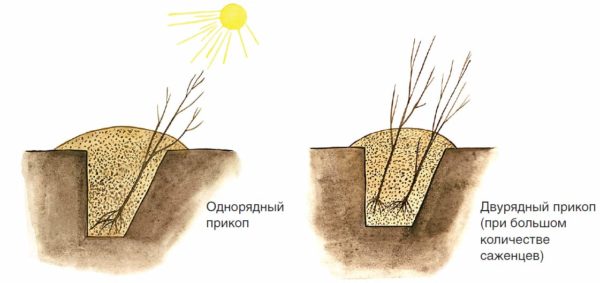 In the garden, you can equip a full shelter for seedlings that have not been planted. Putting them in a special groove is called digging. Choose a place in which water does not accumulate in the spring, away from bushes, dunks and buildings. They dig a trench 40-60 centimeters deep. Better to do it in a direction from west to east. The northern slope is dug flat, and the southern one with a slope of 50-60 degrees.
In the garden, you can equip a full shelter for seedlings that have not been planted. Putting them in a special groove is called digging. Choose a place in which water does not accumulate in the spring, away from bushes, dunks and buildings. They dig a trench 40-60 centimeters deep. Better to do it in a direction from west to east. The northern slope is dug flat, and the southern one with a slope of 50-60 degrees.
Seedlings are pre-inspected, soaked in water with a solution of an antiseptic. Twelve hours is enough to saturate them with moisture and kill all pests. The trench is laid with roots to the north, crowns to the south. The optimal distance between the trunks is 30 centimeters. Fill the soil with seedlings gradually. First, fill the voids between the trunks and under them, moisten them slightly, then fill the north side near the roots, again spill them with water, and then complete the shelter. When the trench is completely buried, it must be tamped lightly without much effort. Top soil is covered with a mixture of peat and sawdust, covered with agrofiber. The branches themselves can be additionally protected with spruce branches or straw.
Coniferous Shelter
Young Christmas trees are sensitive not only to frost, but also to snow load. Therefore, shelter in the garden should begin with the binding of branches. They are gently pressed against the trunk and tied with twine without strong tension. The trunk circle is mulched and covered, the trunk itself is tightened with the selected material. If possible, you can build a triangular frame around the seedling, filling the interior with bags of straw. It is reliable protection of the youngest trees from rodents and from severe frosts.
Valid harbor conifers and polyethylene, various perennial films. In this case, it is necessary to build a frame around the trunk. Such materials are not directly secured to branches, since inevitably the aging and, in the future, decay of the needles is necessary.
Shelter of fruit seedlings
If seedlings have already been planted, it is impossible to dig them into the trench, it is necessary to strengthen protective measures against cold and pests. The trunk and branches are tightly wrapped with synthetic agrofibre in several layers. In addition, a layer of felt can be laid between the fabric and the bark. You need to close all the height, all the small branches, otherwise they will not be able to winter. The trunk circle is necessarily covered with spruce branches or straw, mulching alone is not enough.
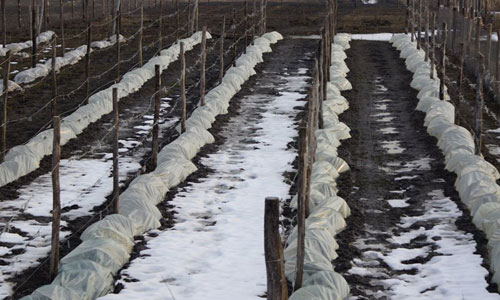 You may be interested in:
You may be interested in:It is advisable to wrap a young sapling of a fruit tree with a thick layer of protection from wind and cold air. It can be both a film and a roofing material. This layer of insulation must be removed at the onset of the first thaw.
Sheltering trees is a simple procedure that can be carried out for a long month before the first cold. Relying only on the snow cover is not worth it. Even coniferous and frost-resistant species winter much better in shelter. Multilayer protection allows to avoid penetration of various rodents to the trunk and young branches, which can lead to the death of plantations. The use of natural materials will reduce costs, and the use of special agrofibre will provide reliable thermal insulation even in the harshest climates.

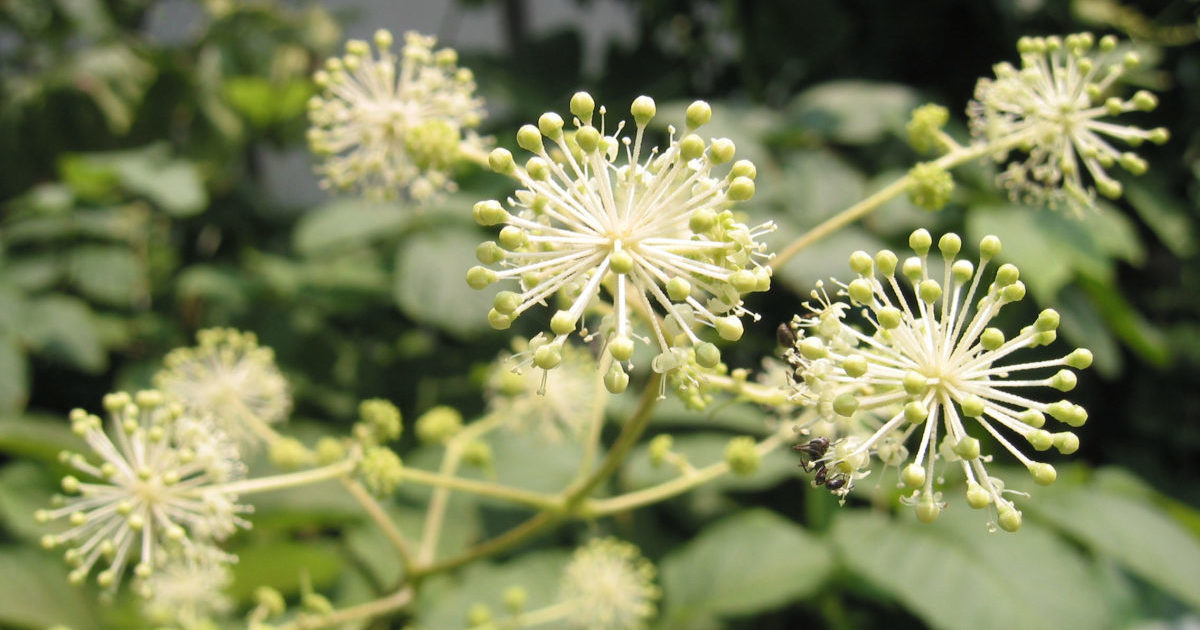 Aralia Manchurian - medicinal properties and contraindications, the use of tinctures in bodybuilding
Aralia Manchurian - medicinal properties and contraindications, the use of tinctures in bodybuilding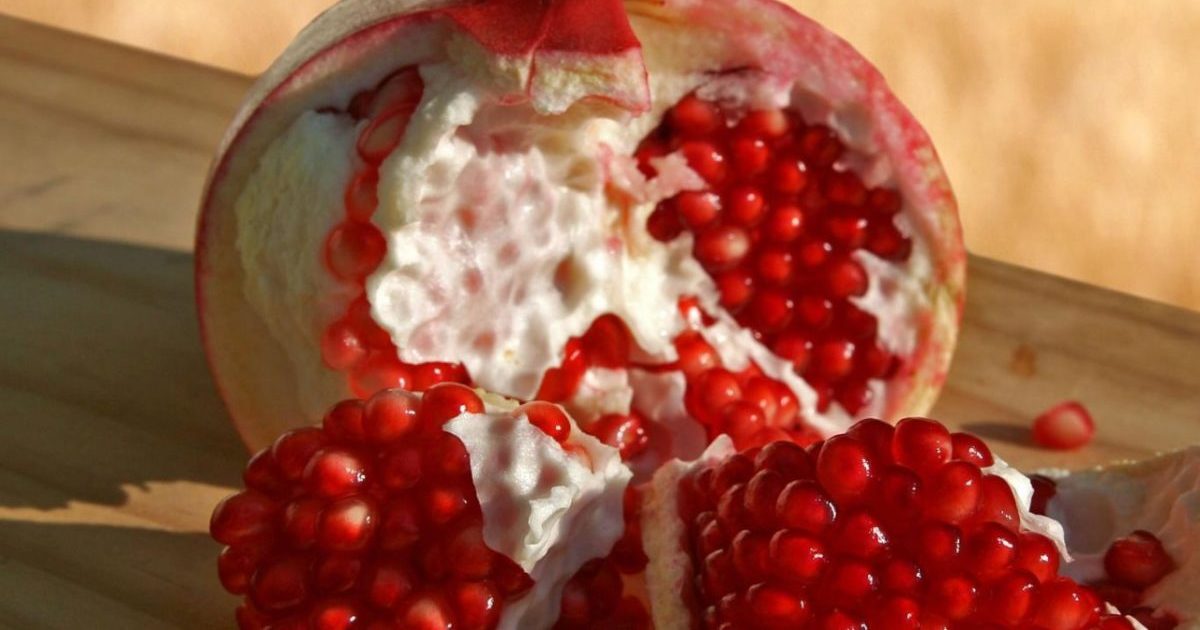 Seedless pomegranate - cutaway appearance, benefits and harms
Seedless pomegranate - cutaway appearance, benefits and harms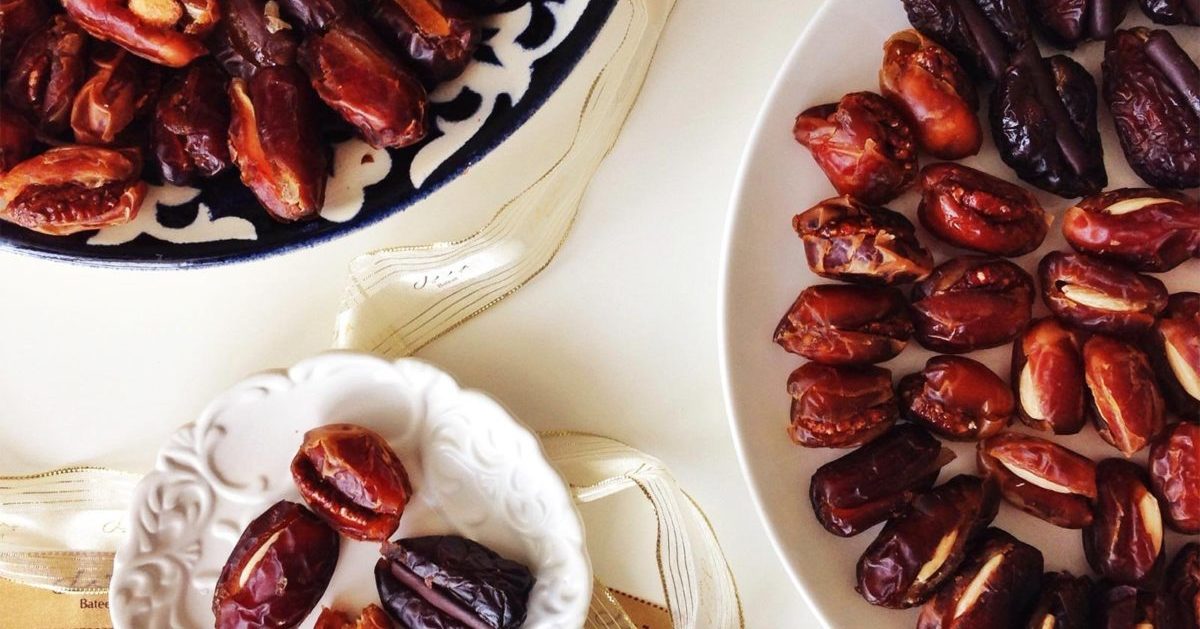 Dates - the benefits and harm to the body, how much you need to eat, properties and calorie content
Dates - the benefits and harm to the body, how much you need to eat, properties and calorie content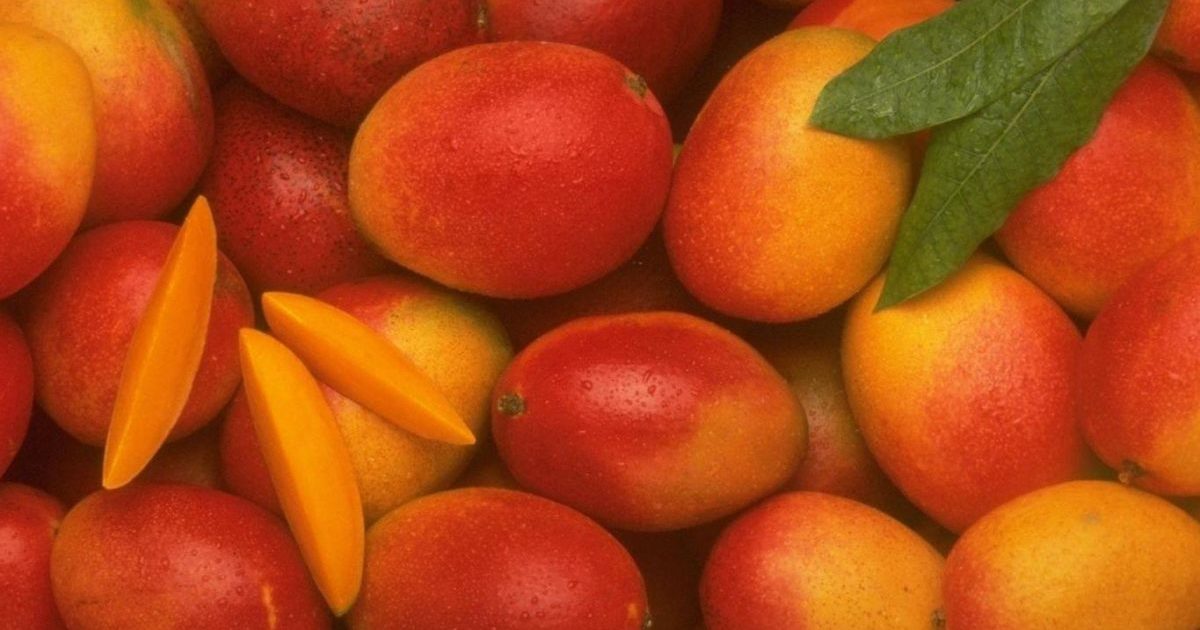 The benefits and harms of mango for the body of women and men - how to eat it?
The benefits and harms of mango for the body of women and men - how to eat it?